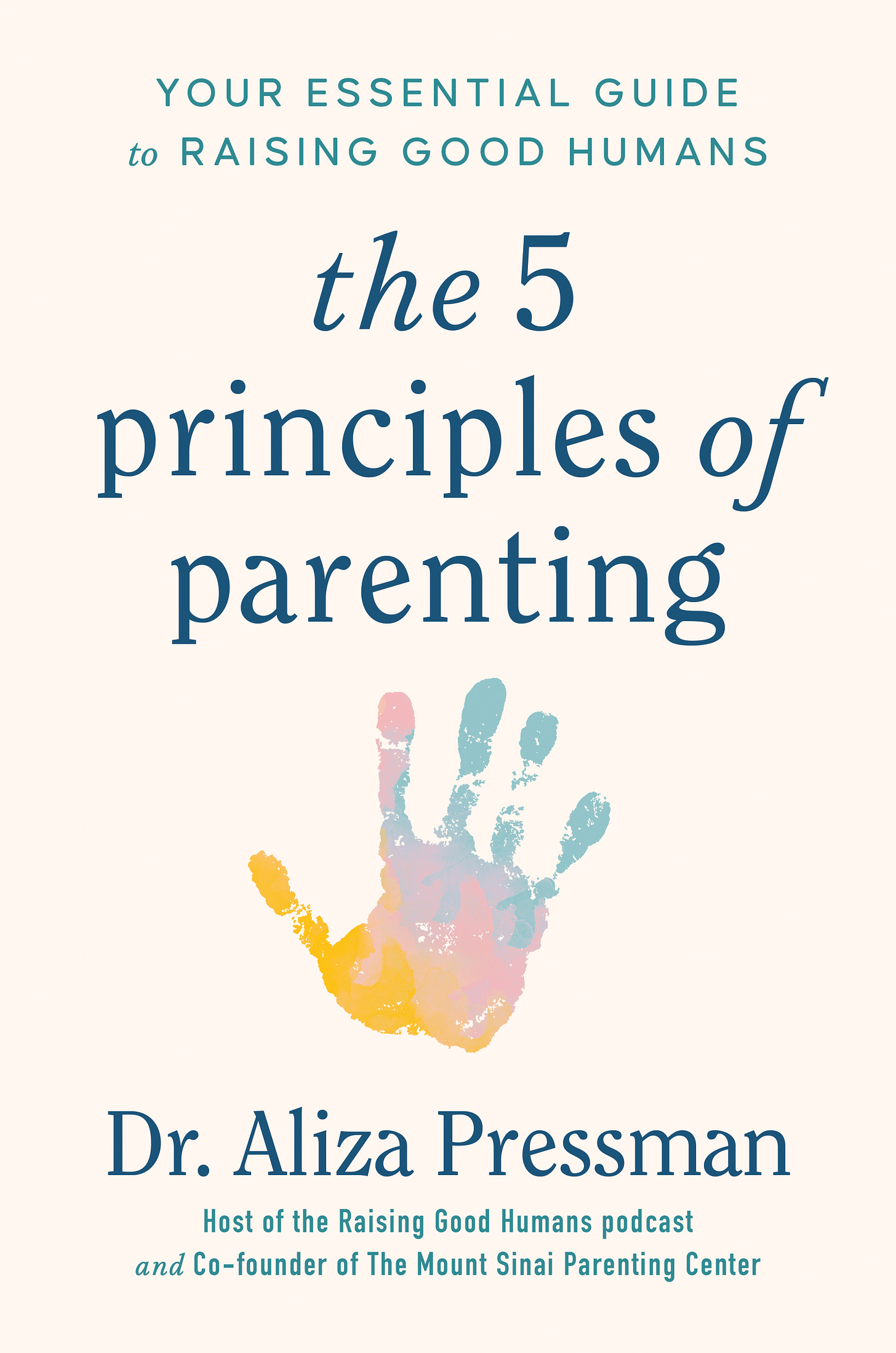Thanks for reading Raising Good Humans on Substack! My first book, The Five Principles of Parenting: Your Essential Guide to Raising Good Humans is now available for purchase here.

Gratitude is closely linked with resilience, but it doesn’t show up in our children super early. Instead, it is a skill that grows. Here’s how to promote gratitude from my book, The 5 Principles of Parenting.
Where to start with a gratitude practice? You guessed it: it starts with us. Try checking in with yourself, mornings and evenings. In the morning, say to yourself, “I’ll say thank you to someone today.” “I’ll show appreciation to someone today.” “When someone helps me today, I’ll feel a sense of thankfulness.” “I’ll notice three people or things I feel lucky to have in my life today.” Then, in the evenings, circle back by asking yourself, “Did I say thank you to someone today?” “Did I show appreciation to someone today?” “When someone helped me, did I feel a sense of thankfulness today?” “Did I notice three people or things I feel lucky to have in my life today?” It’s okay if the answers are no - this is just an exercise to check in, without judgment. What we focus on grows.
Promoting gratitude with infants: Because gratitude isn’t a thing in infancy, we begin by modeling gratitude. Name three things that give you delight about your baby.
Promoting gratitude with toddlers: Start going on gratitude walks and sharing what you’re thankful for. You might say, “I’m so glad this flower is blooming.” If your toddler expresses delight in a puddle, name the feeling: “You’re feeling grateful for this fun puddle.”
Promoting gratitude with preschoolers: Start doing a “rose, bud, and thorn” practice at the dinner table or wherever your family gathers. A team exercise born in the Design Thinking community, “rose, bud, and thorn” has become a popular way for families to connect. In the exercise, each family member shares one thing they’re grateful for that happened that day (that’s the rose), one thing they didn’t like so much (that’s the thorn), and one thing they’re looking forward to (that’s the bud). One of the parents I work with likes to add a feather—something that made them laugh. This practice can help children and adults hunt for the good stuff without denying that, sure, there are going to be thorns in life, too. We’re allowed to be grateful even as we feel the whole range of emotions that humans experience.
Promoting gratitude with elementary-age kids: When kids are in elementary school, add a family gratitude journal to the mix. One to three times a week, have each family member note what they’re grateful for. Start an allowance jar and have kids divide their money among give, save, and spend. Giving bolsters the giver’s, as well as the receiver’s, sense of gratefulness.
Promoting gratitude with adolescents: Continue having family conversations about gratitude, whether it’s with any of the strategies just mentioned, or other regular expressions of gratitude you experience in your daily life. Have tweens choose a local community-service project and commit to giving back.
A quick reminder to buy my first book, The Five Principles of Parenting, and write a review from wherever you order. Reviews really help to get the book noticed, and to spread the word. Please especially rate and review any books purchased on Amazon (it shockingly really, really matters!). Also, when you receive the book, snap a quick pic with it and post on social media. Share one thing you love about it and help me to get more copies into the hands of parents in your community. Tell a friend about the book, or about something you found helpful in the book. Parents look to each other for advice, and I’d love to be a part of the support you pass on to your loved ones.






Reading these brought back memories I'd shelved from the times I'd walk with my kids in the woods then we'd sit on a blanket and talk about gratitude. I can't wait to share these thoughts with them to see what they remember!
Love this 😍 Thank you